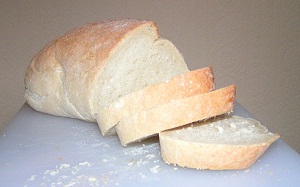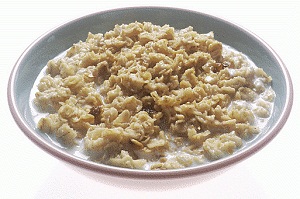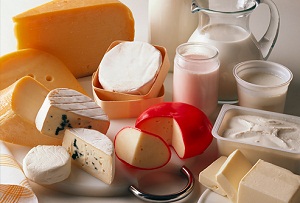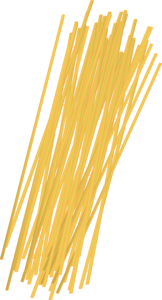When to Eat Low Fiber Foods
Sometimes a low fibre foods diet is required. An average daily intake of lower than 10 grams of fibre per day is recommended when you have acute bowel problems, such as abdominal pain, diarrhea, strictures, obstructions, diverticulitis or inflammatory bowel disease. It is also recommended as a preparatory diet preceding a colonoscopy.
A stricture is when the intestine narrows, making it difficult for food to pass through, while an obstruction means that the intestine is blocked. When that happens, dietary fibre may irritate the bowel causing pain, as it is a bulky indigestible material.
Dietary fibre can also slow gastric emptying. For people who have this problem or those who feel full quickly, an ingestion of low fibre foods is recommended.

White bread is a low fiber food
In the case of diarrhea, high fiber foods increase bowel movements by irritating an inflamed intestinal wall. When you have diarrhea, raw fruits and raw vegetables should be avoided as it can aggravate the problem. Including low fibre foods as a temporary measure can be helpful. For example, switching whole grain bread to white bread and avoiding raw nuts and raw salad vegetables. Once the condition has resolved then including foods with an average amount of fibre such as oatmeal can slowly be added back into the diet.

Oatmeal can slowly be added to a low fibre diet
When there are bowel strictures, obstructions, or diverticulitis, ingestion of low fibre foods can help you control the problem. With an inflamed bowel, High fibre foods can cause a narrowing in the bowel which further increases inflammation. It is also possible for food particles to get stuck in the diverticuli, increasing inflammation and the risk of infection. Therefore, maintaining a diet rich in low fibre food helps fighting back these situations.
When someone suffers from chronic inflammatory bowel diseases, such as Crohn’s or ulcerative colitis, a normal diet is usually used, while a low fibre food diet is needed during a flare-up. Low fibre foods during a flare-up may reduce abdominal pain, improving dietary tolerance. Once again, raw fruits, vegetables and whole grains should not be ingested during this time.

Milk and dairy products are low fibre foods
Keep in mind that foods low in dietary fibre should only be used for a short time to help treat abdominal conditions that are acute, painful or uncomfortable. Once the condition passes, good fibre foods should be gradually added back to the diet, so the digestive system can adapt to the dietary fibre.
Ultimately for long term health, a high fibre diet is what the body needs. If you continually find yourself having to resort to a low fiber diet to control pain or discomfort, then further investigation is necessary to find out what is irritating your digestive tract. It could be stress, bacterial imbalance, food intolerance or something more serious.
List of low fibre foods you can eat while in a low fibre diet:
- Enriched white bread
- White rice
- Plain pasta, noodles or macaroni
- Cereals with no more than 1 gram of dietary fiber per serving

- Most canned or cooked fruits without skins, seeds or membranes
- Raw fruit without skin or membranes
- Fruit and vegetable juice with little or no pulp
- Canned or well-cooked vegetables without seeds, hulls or skins, such as carrots, string beans and peppers
- Tender meat, poultry and fish
- Eggs
- Smooth (creamy) peanut butter — up to 2 tablespoons a day
- Milk
- Yogurt or cheese without seeds or nuts
- Fats, oils and dressings without seeds
- Desserts with no seeds or nuts
